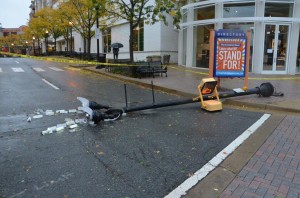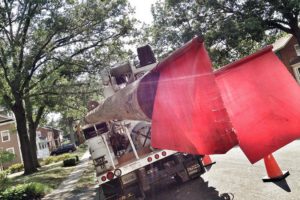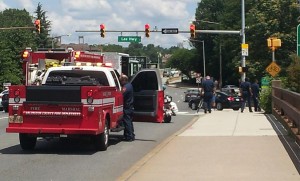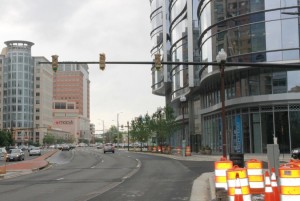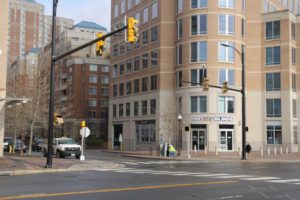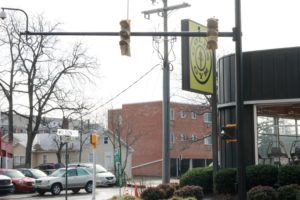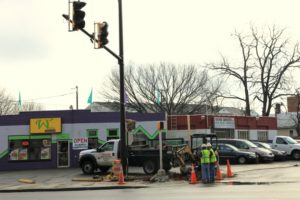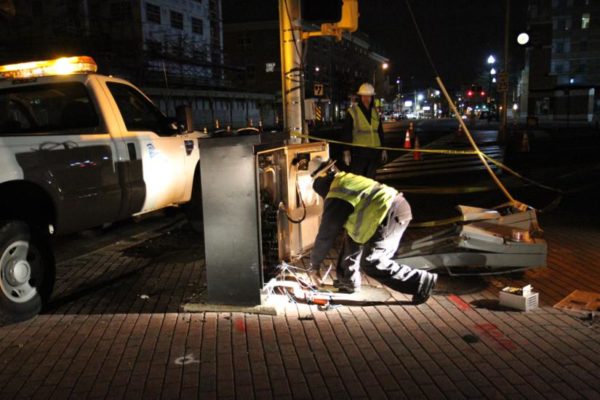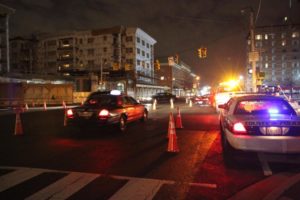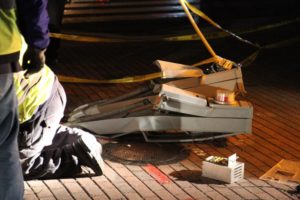 Drivers have a little more time before new red light cameras go up at several dangerous intersections around the county.
Drivers have a little more time before new red light cameras go up at several dangerous intersections around the county.
The seven cameras initially were scheduled to be installed in April. At that time, ARLnow.com inquired about the cameras and learned that there would be a 60 day delay. Now, we’re told the new cameras should be operational by the fall.
“We’ve come across a couple of different hurdles and it’s definitely extending our timelines. The plans the county was supposed to have didn’t come through and a private company had to come in. Some information that was needed was not on the plans provided, so they had to go to survey to get the information,” said Red Light Camera Administrator Officer Caroline Allen with the Arlington County Police Department. “Unfortunately, it’s not as smooth as we hoped it would be to get these cameras out.”
The seven traffic cameras will monitor five intersections shown to have high rates of red light violations. There will be two at Columbia Pike and Glebe Road monitoring eastbound and westbound Columbia Pike, two at Jefferson Davis Highway and S. 23rd Street monitoring northbound and southbound Jefferson Davis Highway, one at Columbia Pike and George Mason Drive monitoring eastbound Columbia Pike, one at Lee Highway and George Mason Drive monitoring westbound Lee Highway and one at Washington Blvd and Glebe Road monitoring northbound Glebe Road.
The first two cameras to be installed — those at Jefferson Davis Highway and S. 23rd — could potentially be in by July if all goes well. The remaining five are estimated to be operational by September.
“We’re still waiting on VDOT approval, then we can go ahead with setting up construction plans,” Officer Allen said.
A study released in January examined the red light cameras installed in Arlington in 2010, and found a decrease in violations at those intersections.
“You can clearly see in the videos that people are running red lights. There are some very close calls,” said Officer Allen. “It’s making an impact just based on the reductions in violations. The number has gone down dramatically.”
Intersections are chosen based on surveys examining the rates of red light violations, the number of accidents, pedestrian safety and the safety of police officers trying to apprehend violators at the intersections.
“It’s defnitely a safety aspect,” said Officer Allen. “Those [intersections] selected are not safe for drivers, not safe for pedestrians, not safe for officers trying to enforce those intersections.”
The standard one month warning period will apply for those caught running red lights at the intersections with the new cameras. After that time, violators will be ticketed.
Once the new cameras are installed, there will be another survey to examine which intersections should potentially receive red light cameras next year.


